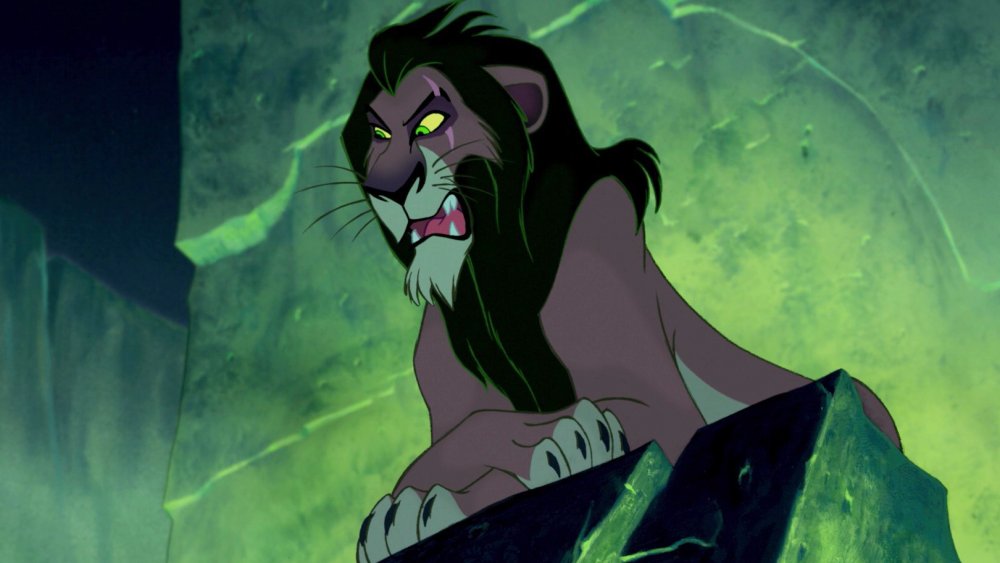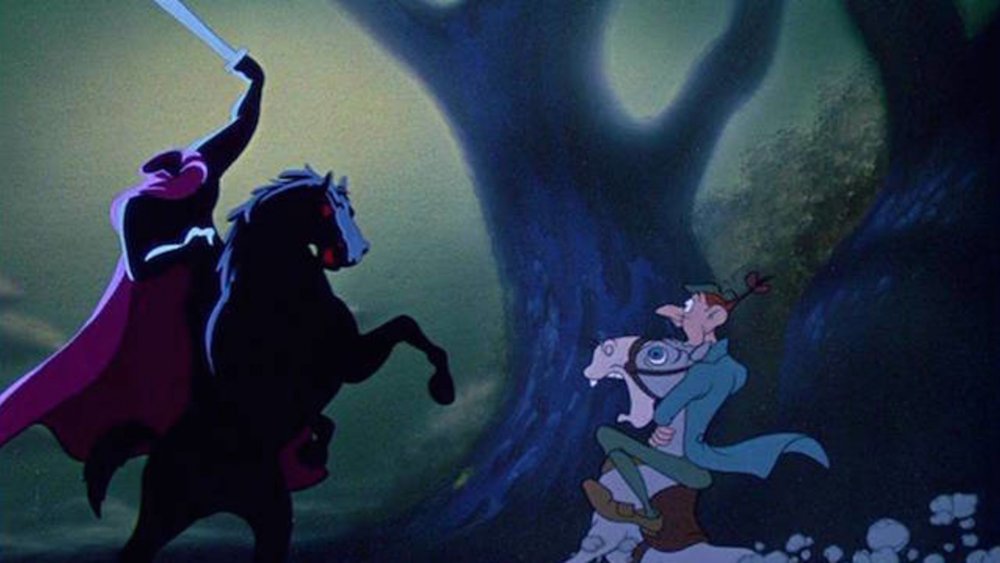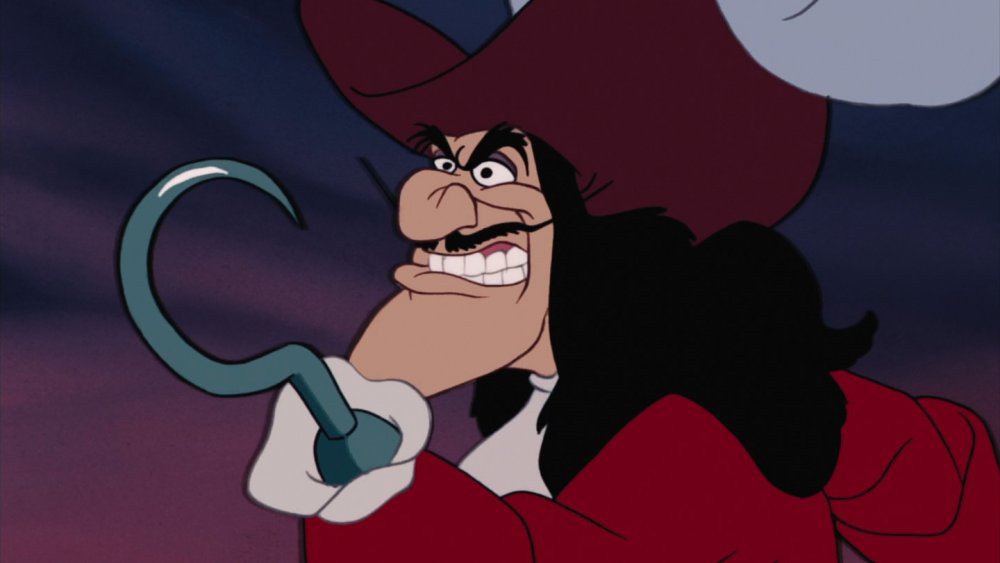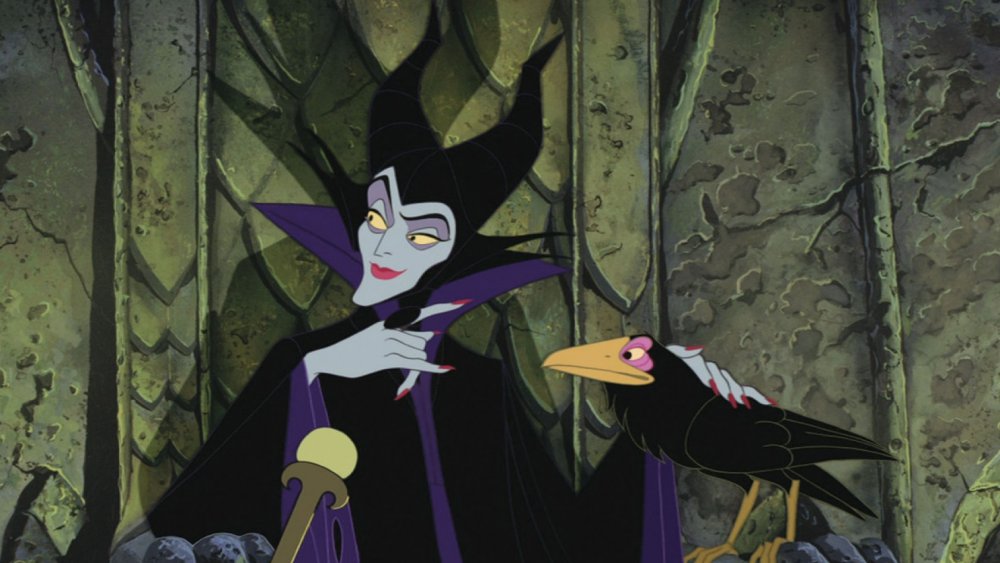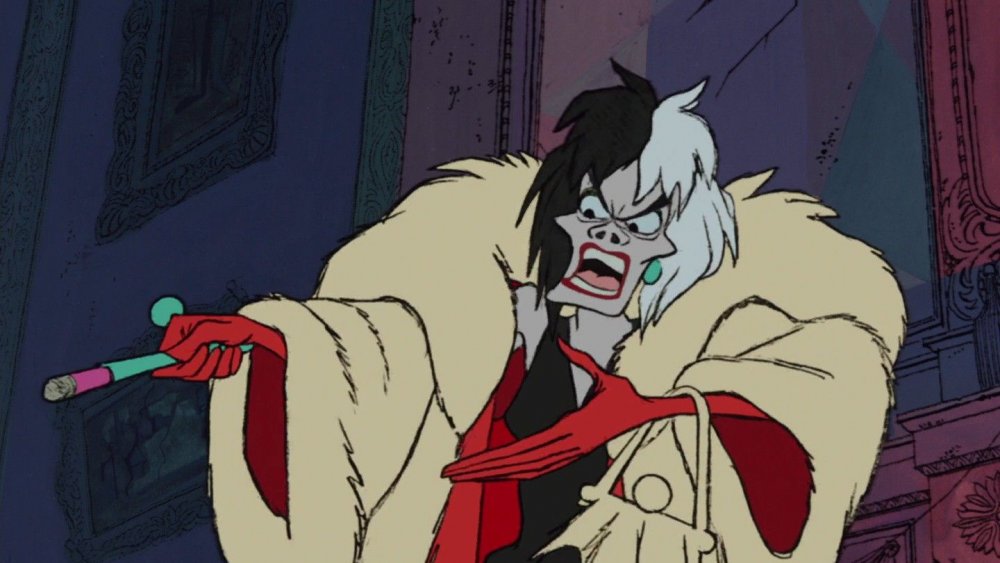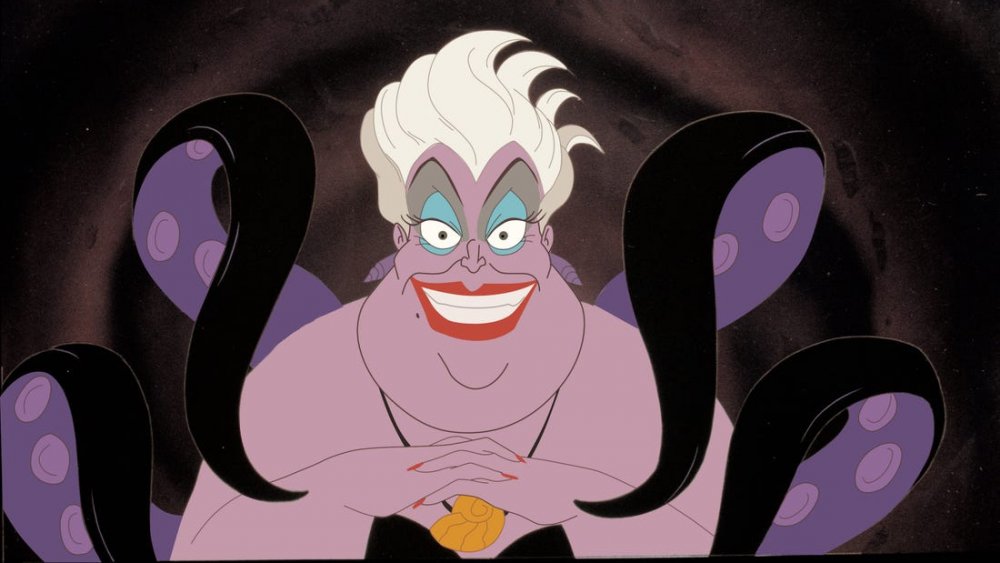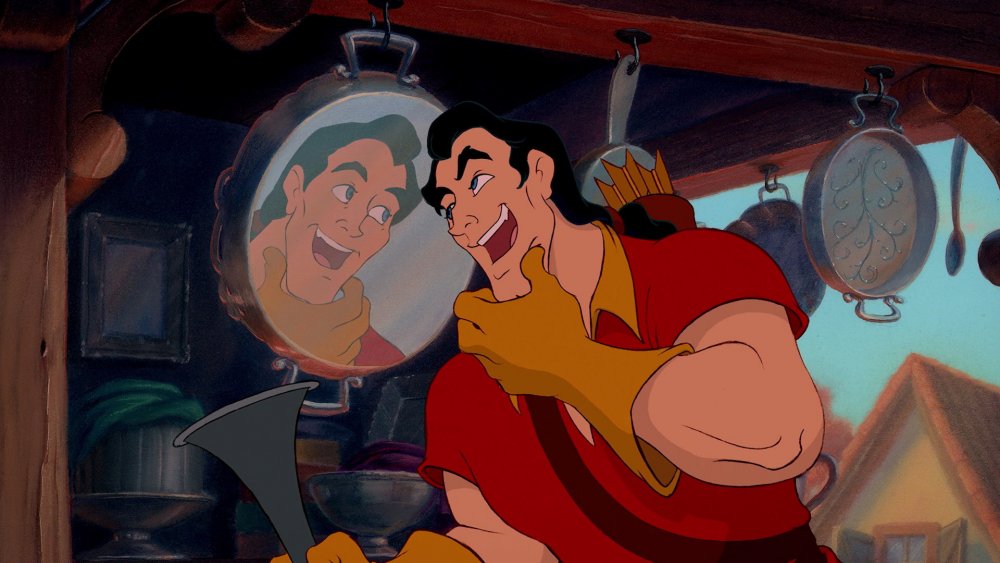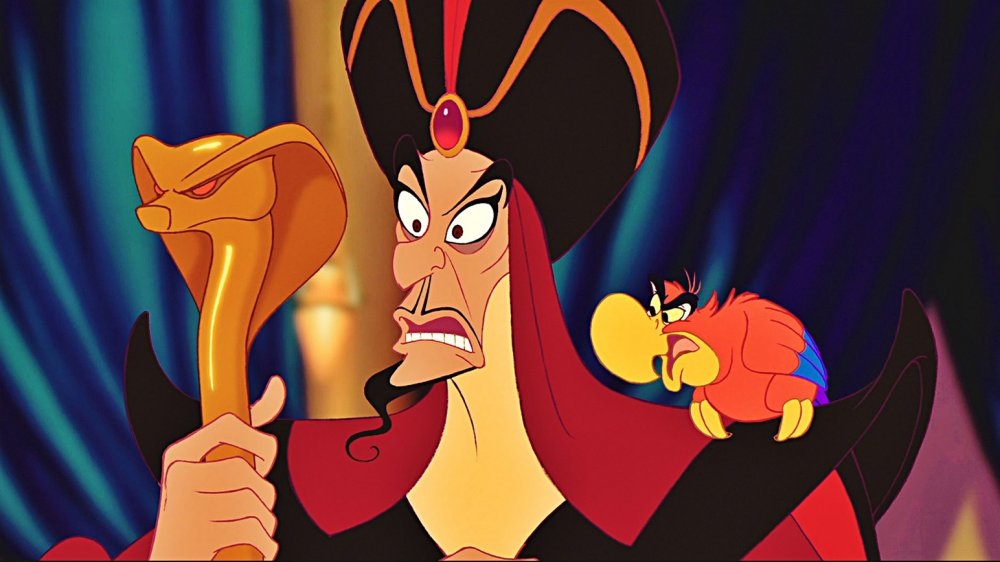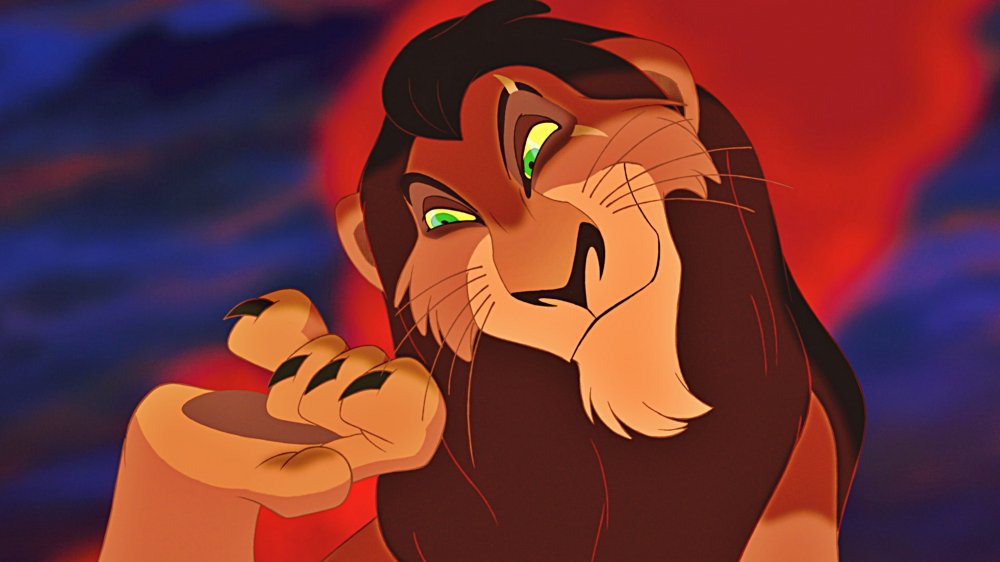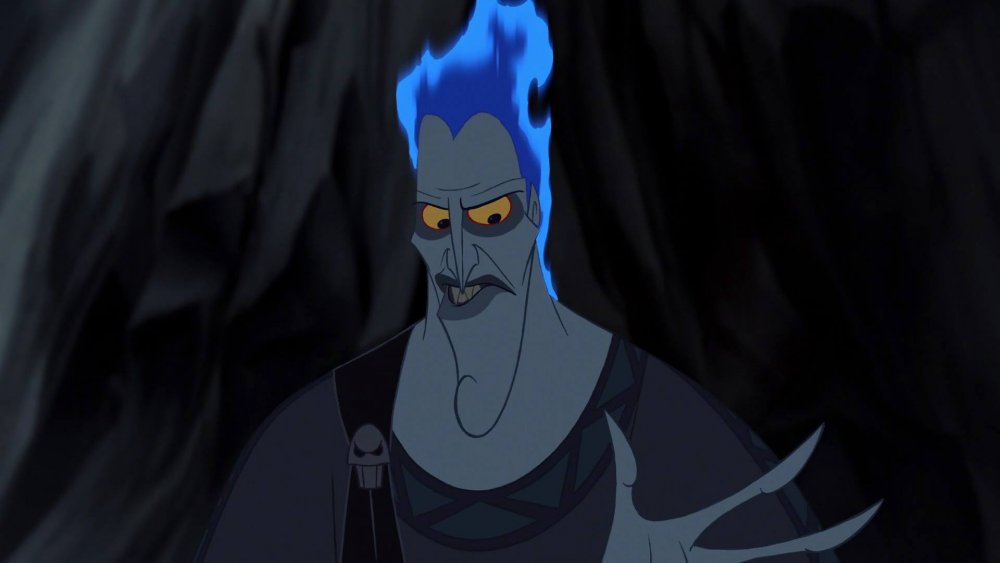The Best Disney Animated Villains Of All Time
Since the groundbreaking release of Snow White and the Seven Dwarfs in 1937, Walt Disney Animation Studios has released nearly 60 animated feature films. An enormous number of them have succeeded, and many are now considered classics of the medium. From the beginning, Disney's films have been aimed at a family audience, centered around clearly defined conflicts between good and evil. That means we've gotten lots of memorable heroes and shining Disney Princesses over the years ... and a whole lot of unforgettable villains.
Whether we're talking about evil sorcerers bent on world domination, royal schemers looking to seize power, or plain old jerks who just like to ruin things for the good guys, the Disney villain is as much a proud tradition at this point as the Disney princess. They're magical and mundane, tragic and triumphant, sinister and sneering. Here are our picks for Disney's greatest animated villains of all time.
The Headless Horseman
After the success of its feature film division in the 1930s, Walt Disney Animation Studios spent much of the 1940s working on anthology films. These movies combine several animated segments into one feature-length experience — a format largely absent in modern cinema. The Adventures of Ichabod and Mr. Toad combines two classic pieces of literature into one film running a little over an hour. You'll sit through almost all of it before one of the scariest villains in Disney history shows up — but trust us, he's worth the wait.
The Headless Horseman, villain from the "Ichabod" portion of the film, is only present for the climactic ending, in which he chases schoolmaster Ichabod Crane through the woods at night. Unlike other characters on this list, the Horseman never speaks, only maniacally laughs, and most of what we know about him comes from a song the other villain of the piece, Brom, sings earlier in the segment. When he finally does show up, his sinister appearance and relentless pursuit lives up to Brom's hype, and is, in fact, made even scarier by Ichabod's contrasting slapstick. The final shot of the sequence, in which he throws a jack-o-lantern at Ichabod across a bridge, remains one of the finest pieces of Disney animation ever crafted.
Captain Hook
Peter Pan is a film about a boy who doesn't want to grow up — and, in fact, never has to. He and his friends, all equally convinced that adulthood is for suckers, live out their eternal boyhood within the magical confines of Neverland. That makes for a dazzling adventure film full of memorable moments, but one of its most striking features is the way Peter Pan treats its villain, Captain Hook.
Captain Hook is, ostensibly, the adult in the room. He doesn't like Peter Pan's childish games — in fact, he wants to put an end to them, once and for all. In practice, though, Hook has all the hallmarks of a playground bully who's terrified to show his own vulnerability. He talks a big game, but he also needs Smee to do virtually everything for him, and whenever his nemesis the alligator looms, he flat-out regresses into childish panic. That combination of grown-up fun-spoiling and utter babyishness makes Hook an unbeatable villain for youngsters: He's all the smarm and rule-making of the grown-up world, brought to his knees by the magic and determination of childhood.
Maleficent
Sleeping Beauty is visually sublime, and absolutely brimming with memorable characters. It remains a highly influential part of the company's animation history — but it doesn't seem to be as beloved as many of Disney's other fairy tale movies. Aurora isn't many people's favorite princess, and, well, when Disney decided to make a live-action Sleeping Beauty adaptation, they centered it around Maleficent instead of the film's ostensible main characters. But that makes sense to anyone who's seen the movie, because Maleficent, frankly, rules.
From the moment you first see her, the evil sorceress at the heart of this tale is unforgettable. Her look remains one of the strongest in the company's entire history of character design, from the black and purple cape to the greenish skin to those legendary horns jutting out above her chiseled cheekbones. You can see the influence of the evil queen from Snow White here, and you can see Maleficent's own look influencing the development of Ursula years later in The Little Mermaid. There's a reason she ended up with her own movie: Every aspect of her demands your attention. Plus, she can turn into a dragon. Forget Aurora and Phillip, we're down to join Maleficent's crusade any day.
Cruella de Vil
One Hundred and One Dalmatians premiered between Sleeping Beauty and The Sword in the Stone, two massive fantasy films full of warriors, fairies, and dragons. In contrast, Dalmatians is about a massive group of puppies who have to flee the clutches of someone who wants to make them into a fur coat.
How do you make that particularly exciting to an audience you've weaned on magic and mysticism? You create a character like Cruella de Vil. There's a reason Cruella is set to get her own live-action movie, in which Emma Stone explores the villain as a 1970s fashion designer. It's because she's just so wicked that she almost seems to be in a bigger movie than every other character. It starts with the shocking hair, the enormous fur coat, and the extra-long cigarette holder, then progresses to the song that Roger writes about her. That's right: Cruella is a Disney villain so evil, she doesn't even have to sing her own Bad Guy Anthem. By the end of the film, she's driving like a bat out of hell, determined to win at all costs — but darn it if we're not still a tiny bit on her side. I mean, this is a woman who fully embraces being named Cruella de Vil. How can you not root for her?
Ratigan
When compared to the booming period of success that was the Disney Renaissance, the 1980s seem like a relatively fallow period for Disney Animation. While the company struggled during that era, though, it was certainly not without its bright spots. One such spot arrived in 1986 with The Great Mouse Detective, Disney's riff on Sherlock Holmes. It follows the adventures of Basil, a mouse sleuth, as he works to thwart a plot to take over all of English mousedom.
At the center of that plot is Professor Ratigan, a Disney villain who might not rise to the level of Scar or Ursula in the realm of the public imagination, but deserves just as much attention. For one thing, he's voiced by Vincent Price, who turns in a brilliant performance that ranks up there with any of his legendary live-action villainy. For another, Ratigan gets the best song in the movie, as Disney villains so often do. And then there's Ratigan's whole look. I mean, just take it in. The cape. The cravat. The top hat. He's not just sinister — he's a style icon.
Ursula
The period that has commonly become known as the Disney Renaissance — the company's resurgence as an animation powerhouse in the late 1980s and early 1990s — begins with The Little Mermaid. It's easy to see why this was the film that jumpstarted the company's renewed creative prowess: The songs are fantastic, the animation gorgeous, and the characters unforgettable. But even in a film that includes Ariel, Flounder, and Sebastian, perhaps no character is more instantly memorable than Ursula the Sea Witch.
Like all Disney villains, her story begins with her look. In that regard, Ursula is an absolute home run, from her ghostly hair to her sinuous tentacles. Then there's Pat Carroll's husky, sardonic vocal performance. Whether she's cracking jokes or singing her signature song "Poor Unfortunate Souls," Carroll's work is utterly iconic. She's both figuratively and, by the end of the film, literally larger than life, and yet the whole performance suggests something deeper behind the villainy. We're so fascinated by Ursula that we're left wondering just what happened to make her so manipulative and nasty. Maybe it's a tragic tale. Maybe she's just a meanie. But you're left wondering — and that's what matters.
Gaston
Many of Disney's most famous animated villains are rooted in the supernatural. Beauty and the Beast flips that dynamic: Here, the supernatural creatures turn out to be the good guys, while the bad guy is a pompous, sneering, and utterly mundane village jerk named Gaston.
Gaston is a caricature of the classic Disney prince. His face and body have been exaggerated to absurd lengths, but their origin lies in our ideas about what a hero looks like — and the same is true of his personality. He's great at everything, but he's especially great at telling you how great he is at everything, from drinking to hunting to eating lots and lots of eggs. He's a heroic manly man, according to our culture's ideals, and that's the root of his nastiness. Throw in his use of his Local Hero status to try and straight-up murder the Beast, force Belle into marriage, and lock her father up in an asylum, and you've got a villain for the ages. Oh, and as with almost everyone else on this list, he gets a killer song — this one with antlers.
Jafar
The Disney Renaissance was launched by The Little Mermaid, and just as that film set the bar for quality among Disney releases throughout the 1990s, so too did Ursula the Sea Witch set the bar for unforgettable villains of the era. Ursula is a hard villain to live up to for even the most striking bad guy, but at least characters like Gaston and Scar had the benefit of not being another evil sorcerer character. Aladdin's Jafar didn't have that advantage ... but he still manages to be an absolute scene-stealer.
Jafar's red, black and gold costume is eye-catching even among Aladdin's parade of gorgeous costumes and characters designs, but what really sets him apart in terms of his look are his pencil thin facial hair and that amazing cobra-headed staff. It gives him something dynamic to do, even when he's just casting spells. Then there's that voice. Jonathan Freeman's wicked, charming performance as the character is as smooth as silk, especially when paired with Gilbert Gottfried's Iago. Jafar is a sneering snake (literally, by the end of the film), Aladdin's total moral opposite. He's a schemer, a liar, and a cheat, and boy is he a whole lot of fun to watch.
Scar
When it was released in 1994, The Lion King swiftly rose beyond the realm of blockbuster success and into the realm of global phenomenon. It was Disney's most successful animated feature ever at the time, and remains a high-water mark for the studio in the eyes of many fans. As with all of the films we're discussing, that's true for a lot of reasons, and one of them is, without a doubt, the presence of Scar.
With his black mane and unmistakable voice, provided by the great Jeremy Irons, Scar is immediately set up as a contrasting figure with every other lion in the film, an outsider even when invited to take part in the activities at Pride Rock. By the time he gets his own song — the electrifying "Be Prepared" — he's been elevated into the realm of the all-time great Disney villains through sheer force of personality. Then, when his devious preparations finally start to pay off, he's so nasty and unapologetic that we almost feel bad for ever having liked him in the first place. Scar is exactly the kind of villain The Lion King needed to become the Disney epic it did in the 1990s, and his portrayal still holds up perfectly today.
Hades
As the 1990s wore on, Disney had to invent ever-more creative ways to top itself. The bad guys had to evolve as much as the good, and some films pushed that evolution further than others. Hercules is an example of Disney's efforts to really go big or go home with its villains — and boy, did it work. Enter the unforgettable Hades.
Because Hercules is not a fairy tale but a Greek mythology epic, just about every character in the story gets to be larger-than-life, from the gregarious Zeus to the legendarily powerful Hercules himself. That means Hades could have been a giant, grim specter draped in nothing but black. Instead, we got a flame-haired, wise-cracking incarnation of the character who turns out to be a perfect fit for the kind of pop-mythology aesthetic the film embraces. James Woods' performance is perfection, bringing the sarcastic, snappy, cynical god to crackling life. He's a jerk, sure, but he's hilarious and surprisingly sympathetic. Sure, you're not the god of the dead, but haven't you felt surrounded by incompetent idiots before? He might have attempted to poison a baby, but man, we'd spend an afternoon hanging out with Hades in a hot second.
